Best indoor smart bikes 2025: for the best training experience year round
The best smart bikes can keep your training on track, regardless of the weather, all tested and rated
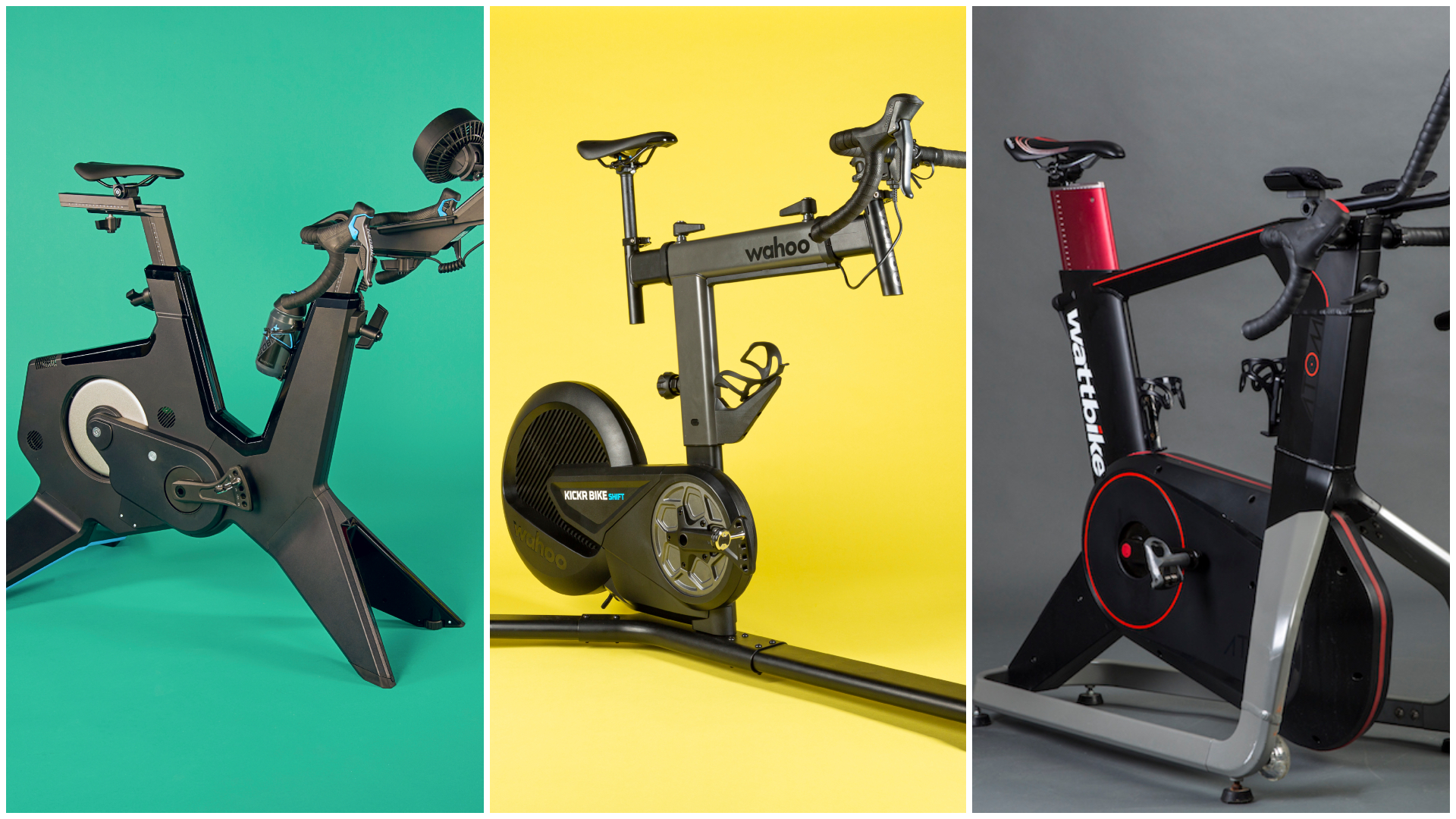
Given the vagaries of the weather, training indoors has its clear benefits. Add in a busy work schedule, and it makes even more sense. The best indoor smart bikes enable you to train with purpose when a cold or wet ride outdoors isn’t appealing. Likewise, if you’re short on time, they can deliver a dedicated workout in about the time it would take you to get changed into your cycling gear, inflate your tyres and decide which route you’ll take.
While you can use one of the best smart trainers for your indoor workouts, a smart bike offers a far more realistic ride feel than you typically get from the best exercise bikes. They also provide you with numerous technological benefits that can help improve your fitness, including integrated power meters, automated incline adjustment, and resistance.
Add the ability to connect seamlessly with a variety of indoor training apps and your choice of the best bike computers, and you have an immersive training experience that provides a wealth of real-time data to allow you to track your progress. In recent years, bikes like the Zwift Ride have elevated the experience, enabling you to control your avatar and incorporating video game features to break the monotony of indoor cycling. However, it is still the Wattbike Atom that tops the pile, ticking almost every box; its reputation and overall performance as a training tool is second to none.
Naturally, all of this means that choosing the right smart trainer for you isn’t straightforward. Fortunately, we’ve tested all the bikes found in this guide and have selected our favourites here in this easy-to-use and comprehensive overview.
Best Indoor Smart Bikes
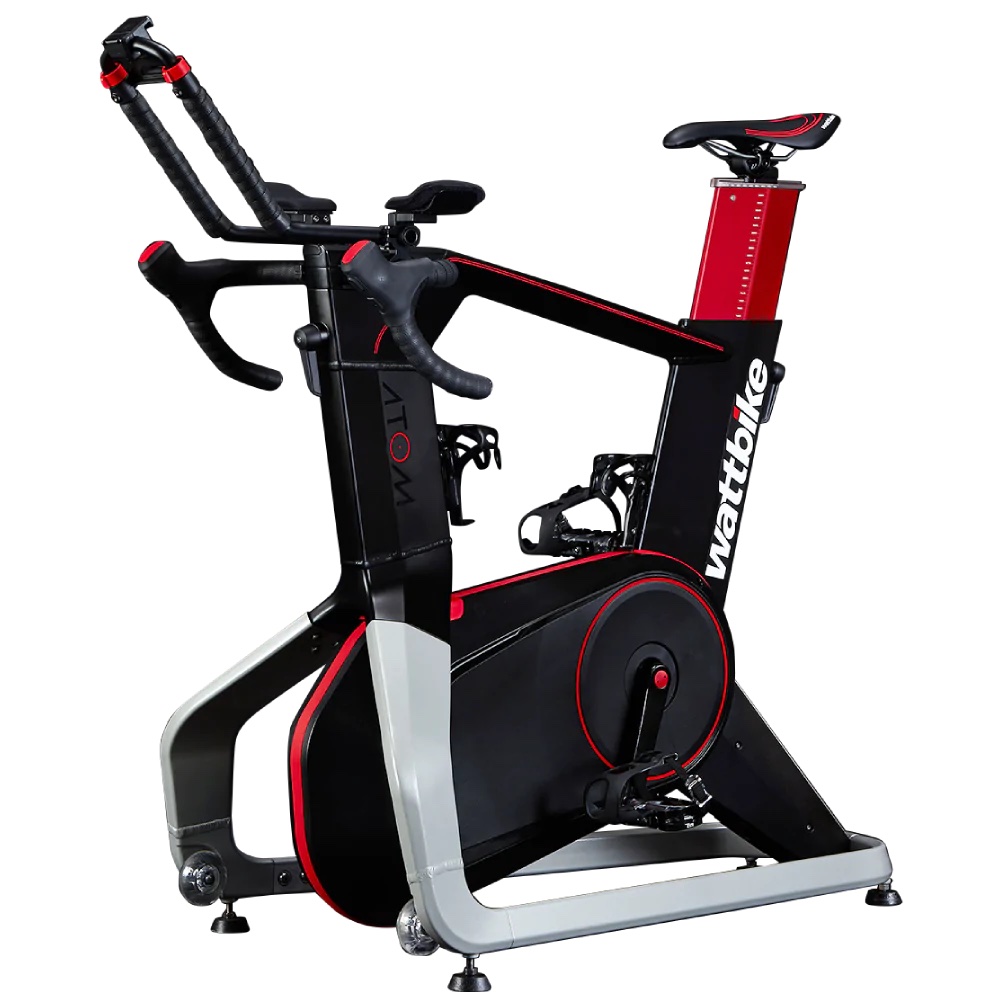
Boasting 2,500w of power and improved accuracy, the Atom is both smooth and quiet. Structured workouts available via the dedicated hub make it ideal for tracking progress.
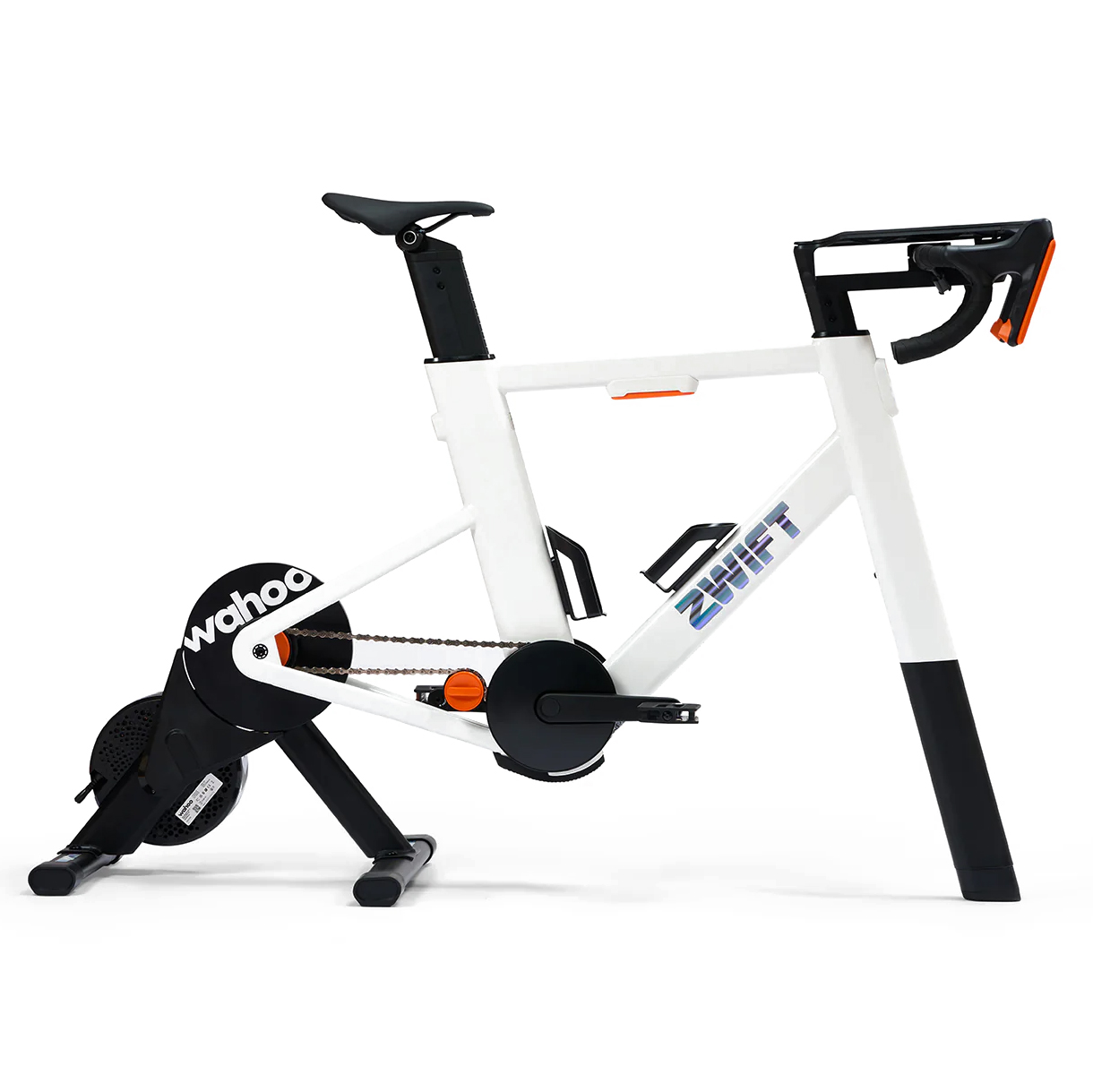
Zwift Ride is an entry-level indoor smart bike that’s half the price of its competitors. It's simple to use and set up, quiet and easy to live with.
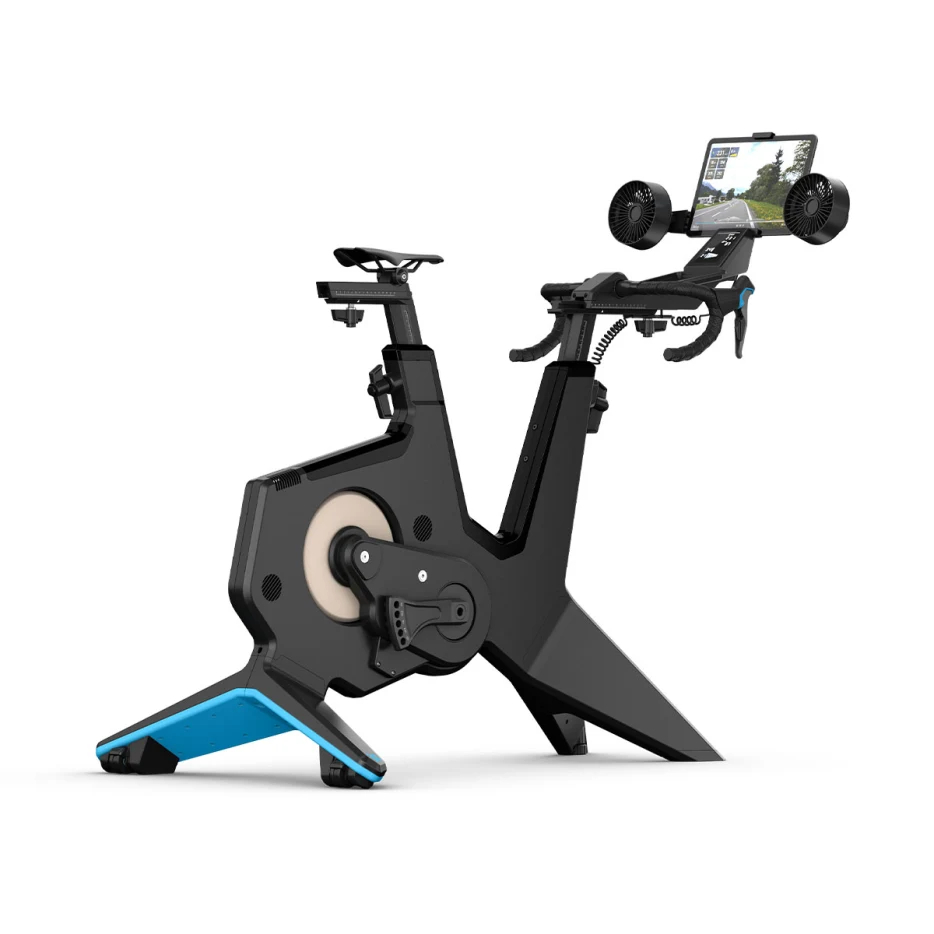
Please excuse the superlative but the Tacx Neo Bike Plus is 'the smoothest' smart bike we have tested. Which makes it great for those looking to get started in the world of virtual racing.
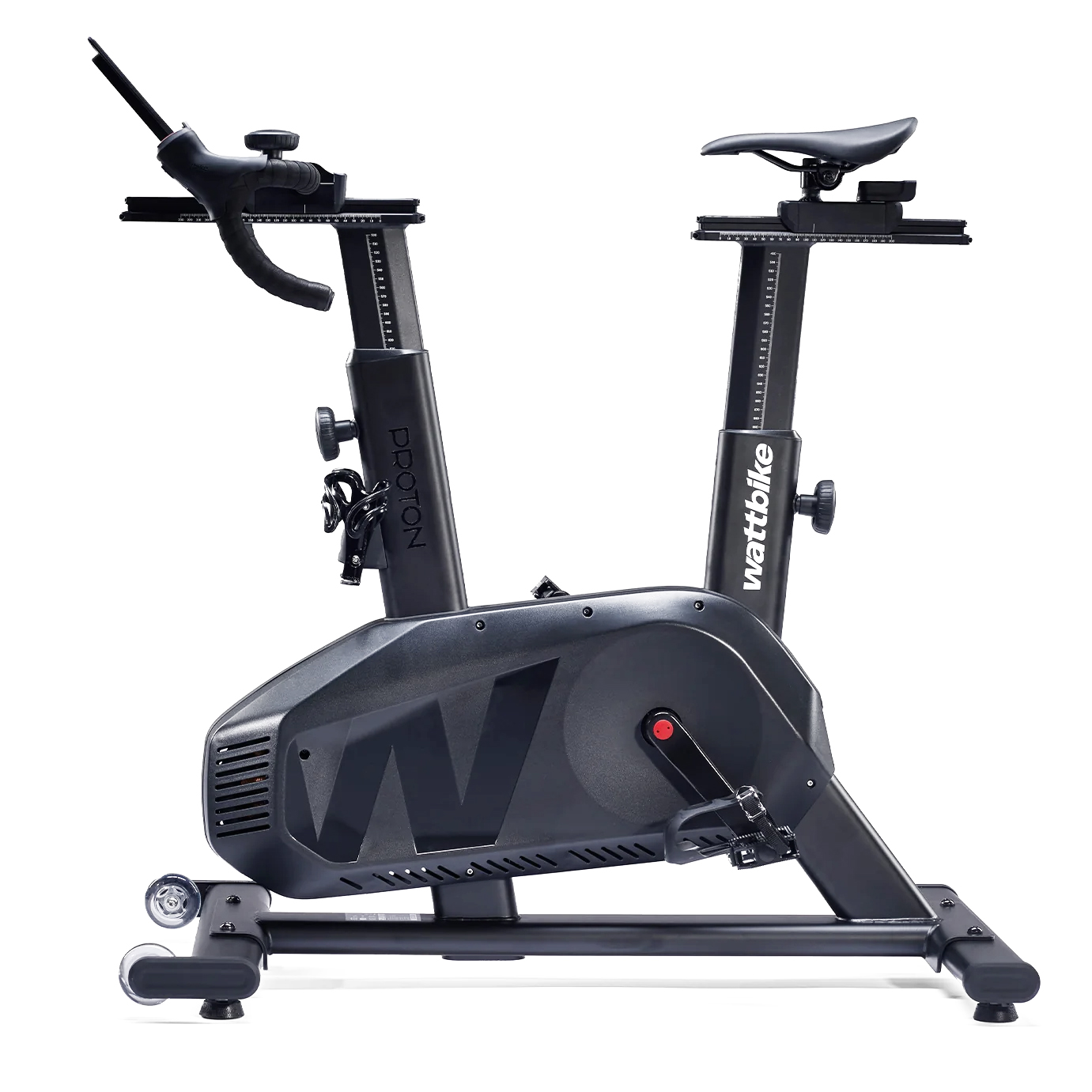
Offering performance similar to that of the more expensive smart bikes, its compact size and simple, tool-free adjustments stand the Proton out in the crowd.
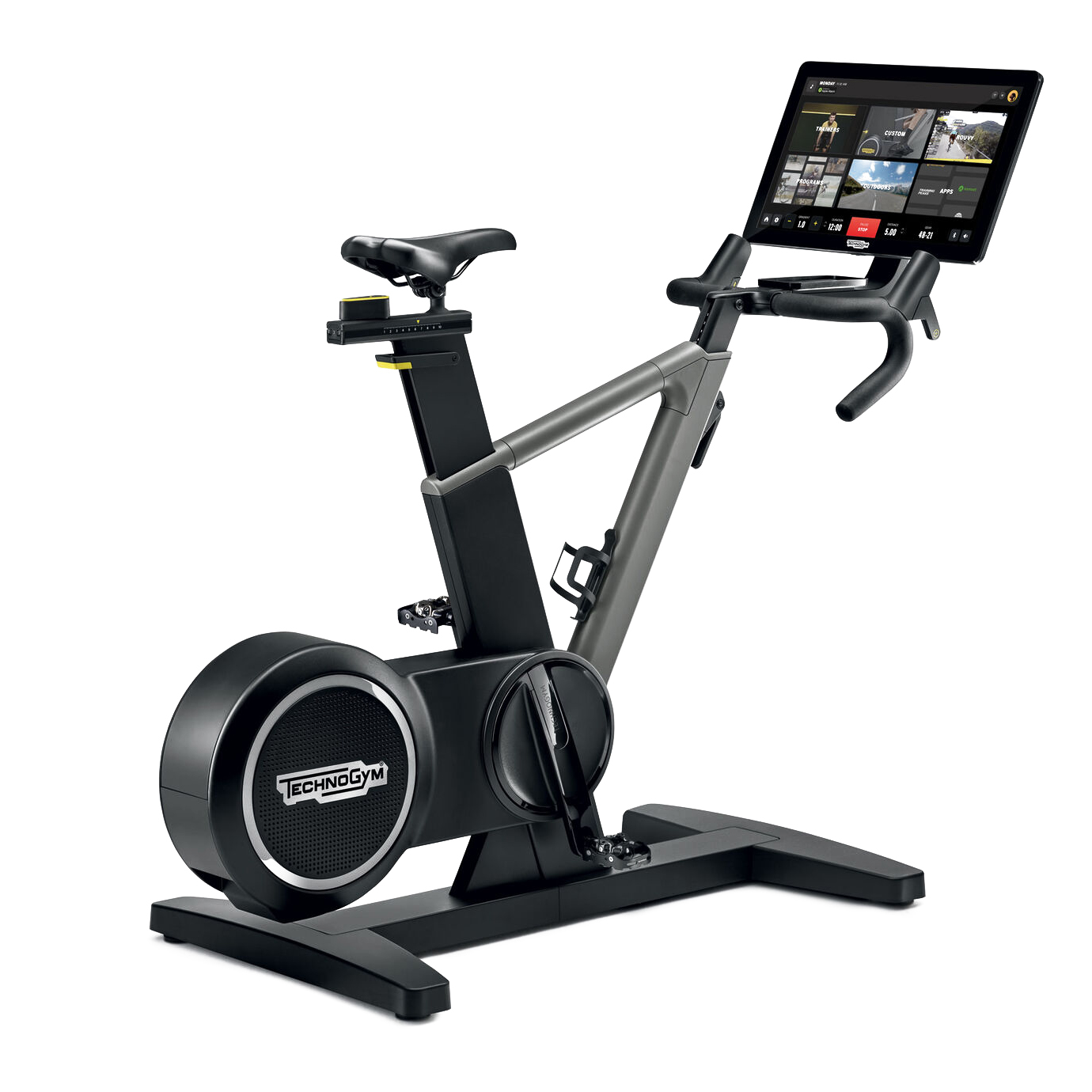
Technogyms technical prowess in commercial gym equipment clearly shines through on the Ride, which is incredibly user-friendly. However, the high cost can't be justified when it's considerably down on peak power vs the competition.

If you want your indoor training to replicate riding outdoors, the Kickr is for you. Features integrated grade changes up to 20%, customizable gearing, and simulated shifting.
Load more of the best smart bikes
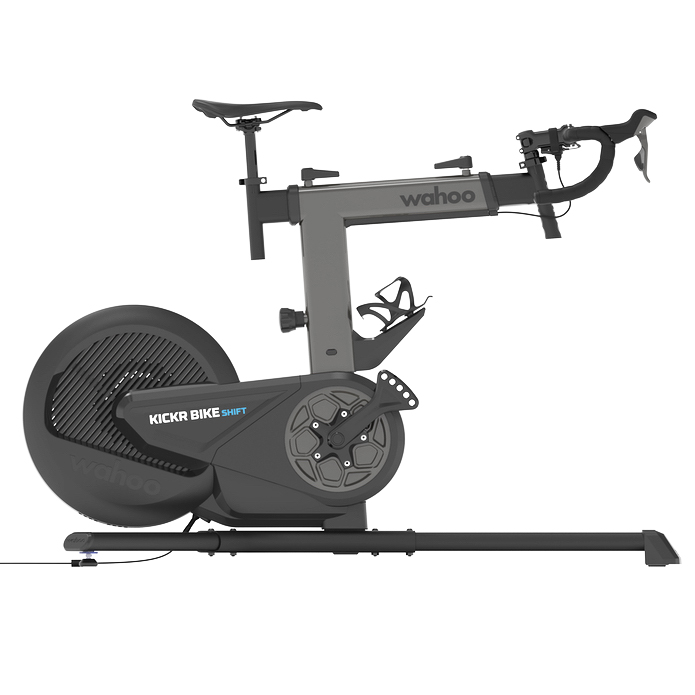
The Kickr Bike Shift is essentially a streamlined version of the Kickr Bike, yet it retains many of the top features found on its larger sibling. Its fit and realism remain high, and the precision it offers is unmatched.
The best indoor smart bikes: Our top-rated
Best overall indoor smart bike
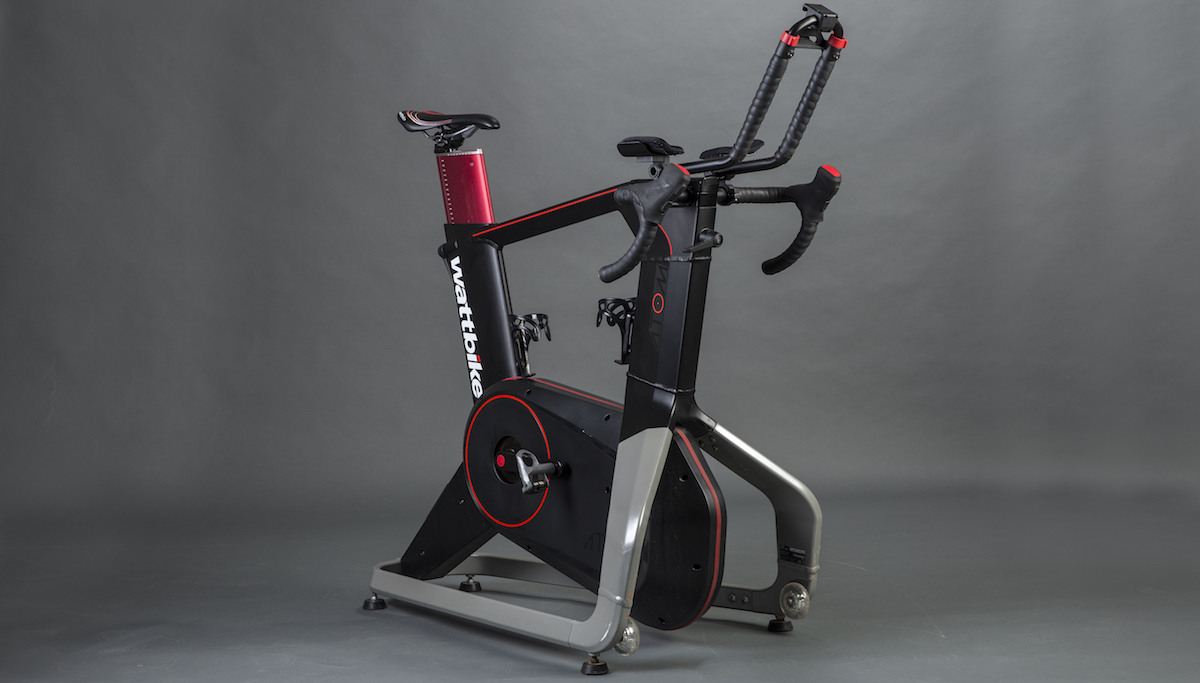
Specifications
Reasons to buy
Reasons to avoid
The Atom is our choice for best overall smart trainer. It gets the nod thanks to its unmatched smoothness and fluidity of pedalling that makes it a joy to use. Couple this with the fact that it’s surprisingly quiet when in use and you have a bike that’s well-suited to a family house or shared apartment as much as it is a dedicated training space away from the home.
Wattbike has increased the Atom’s peak power from 2000wh to 2500wh as well as improving its accuracy. It makes it a good match for even the most powerful of riders. Add in the ergo mode and the maximum gradient of 25% and you have a thoroughly competent bike that’s a good fit for Zwift races and the like.
The Atom isn’t perfect. It’s still heavy despite being 11kg lighter than the previous model, and while the adjustability is straightforward to use, it’s a little limited compared to some of its competitors, with a fixed bar width and crank arm length. That said combine the realistic ride feel and the simple ‘plug in and play’ set up and you have a smart bike that ticks most of the boxes.
- Read our full Wattbike Atom smart bike review
Best budget indoor smart bike
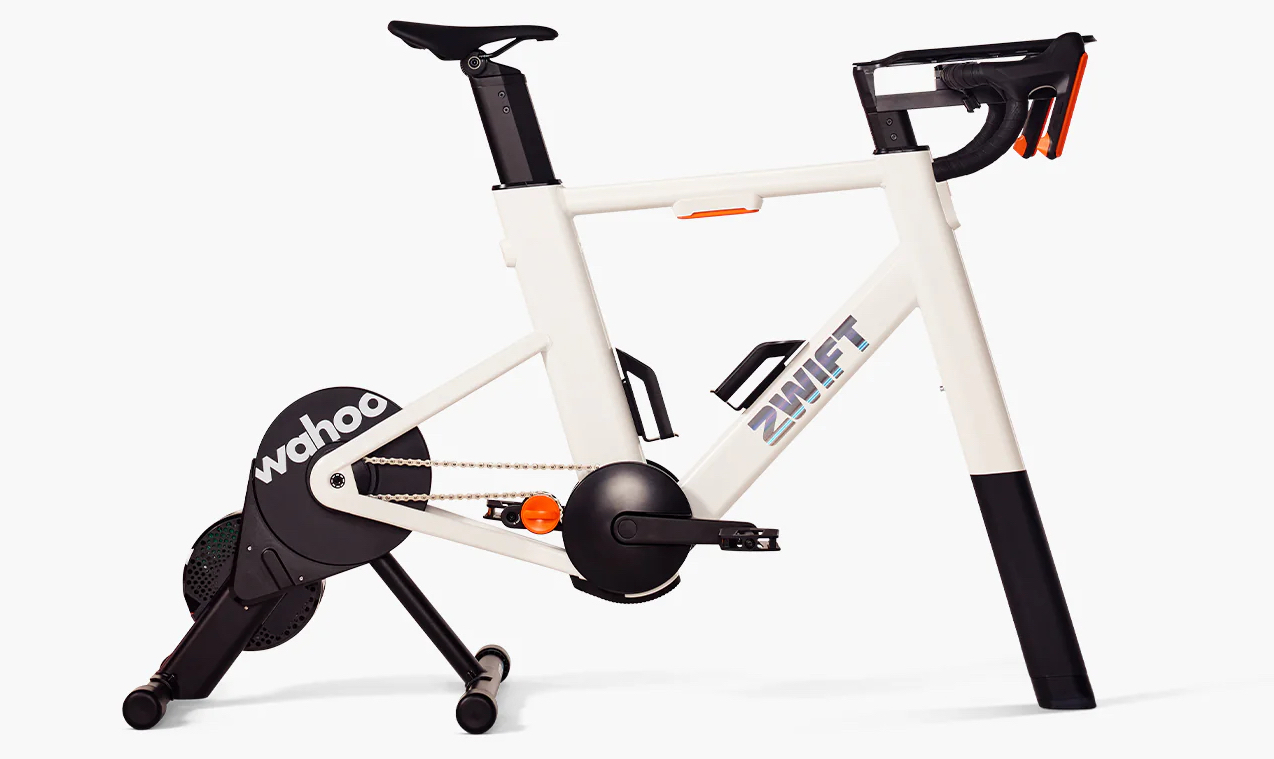
Specifications
Reasons to buy
Reasons to avoid
The Zwift Ride is an interesting offering. Designed to make smart training more accessible, it’s essentially a steel frame that can be paired with a smart trainer. We reviewed it as part of a package with the Wahoo Kickr Core.
Greater accessibility may start with the reduced costs of the Ride compared to some smart trainers, but also extends to the ease of set-up. We found that dialling in the basic fit was a breeze with Zwift’s ‘sizing by letter’ system, meaning you’re able to adjust the bike pretty quickly, making it a good fit for a household of multiple users.
Once set up, you have access to plenty of Zwift tech, from its straightforward cog system, a single sprocket hub that facilitates virtual shifting and means you don’t need a cassette. We found that in combination with the Kickr Core, it delivered excellent shifting and a surprisingly quiet operation. The shifter buttons continue the theme of accessibility, and we found them intuitive to use.
- Read our full Zwift Ride with Wahoo Kickr Core review
Smoothest indoor smart bike
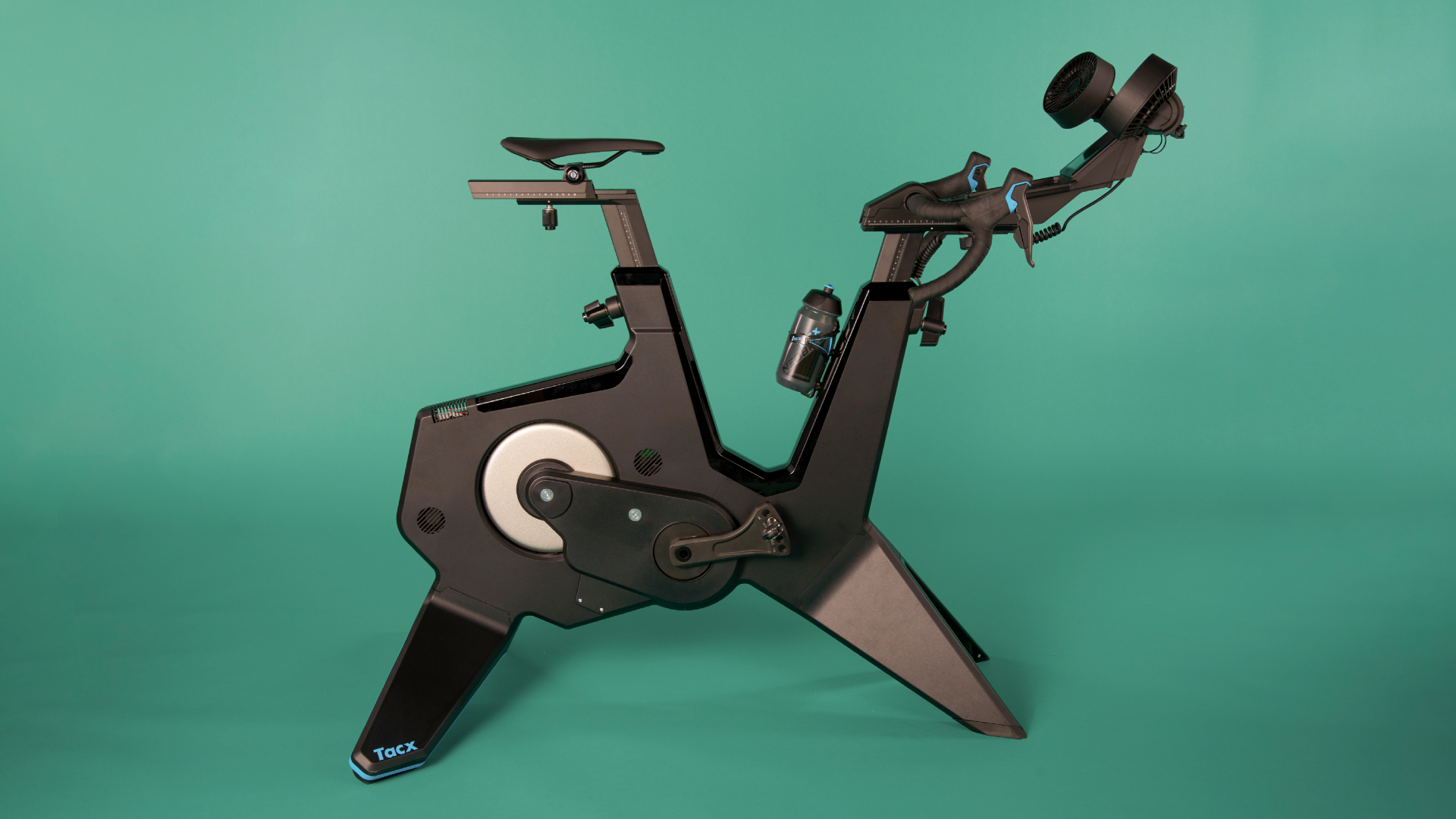
Specifications
Reasons to buy
Reasons to avoid
The headliner here is the smooth ride that the Neo Plus delivers. It uses Neodymium magnets to create resistance within the flywheel and we can attest that it works like a dream. It’s comfortably one of the smoothest smart bikes we’ve ever tested, most apparent when we were using Zwift, with the precision of the ERG mode impressing us greatly. The accuracy of the power meter proved to be spot on as well.
But the features don’t stop there. The range of adjustments are impressive and allowed us to really dial in the fit with ease. There’s also an inbuilt fan as well as holder for your tablet as with the previous model, but the shifters have been completely redesigned. We found that both their functionality and comfort have been improved, something that couldn't be said for the last Neo Plus offering. There’s also a slimmer seat post and an increased range of crank length options. It all adds up to a worthwhile upgrade.
- Read our full Tacx Neo Bike Plus review
Best for multiple users
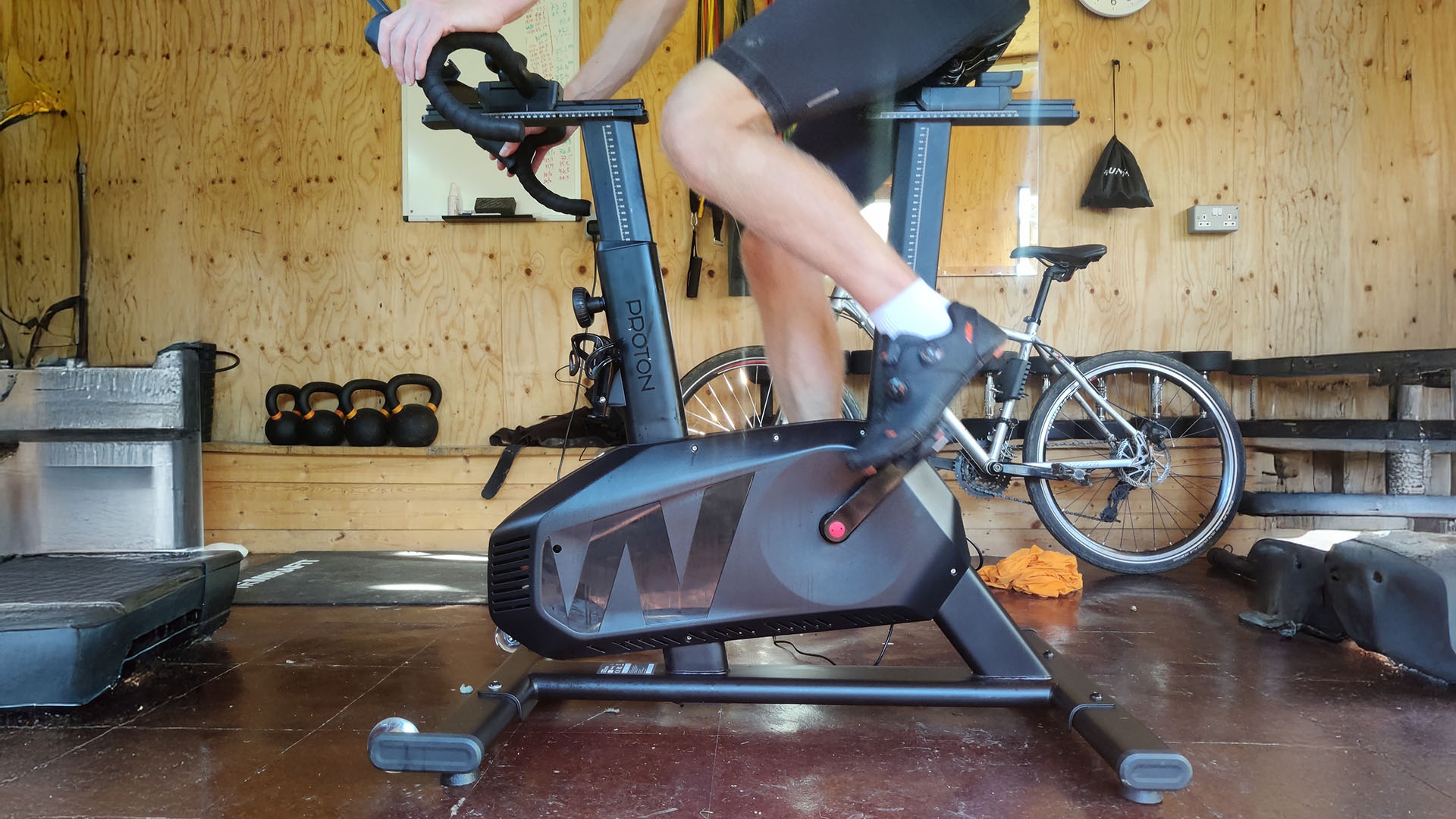
Specifications
Reasons to buy
Reasons to avoid
Like the Atom featured above, the Proton is a weighty number. In fact, at 48kg, it’s one of the most robust bikes in this guide. Fortunately, it comes with wheels fitted to make it easier to move around, but it's probably best suited for those who have a dedicated training room where the bike can stay put.
As far as set-up goes, the Proton is wonderfully simple. Adjustment is tool-free, and we were able to position the saddle and bars correctly in seconds. If you plan on sharing your smart bike with other users, it’s a real bonus. Getting started on the Proton is just as straightforward, too, thanks to the free hub, which means you don’t have to have a third-party subscription to an app such as Zwift.
While the Proton is a more affordable offering from Wattbike, you still get plenty of value for your money. The gradient simulation at 25% and peak power of 1800W are both comparable to the other models featured in this guide. We also found it to be highly accurate, as well, again comparable to far more expensive machines.
- Read our full Wattbike Proton smart bike review
Best indoor smart bike for ease of use
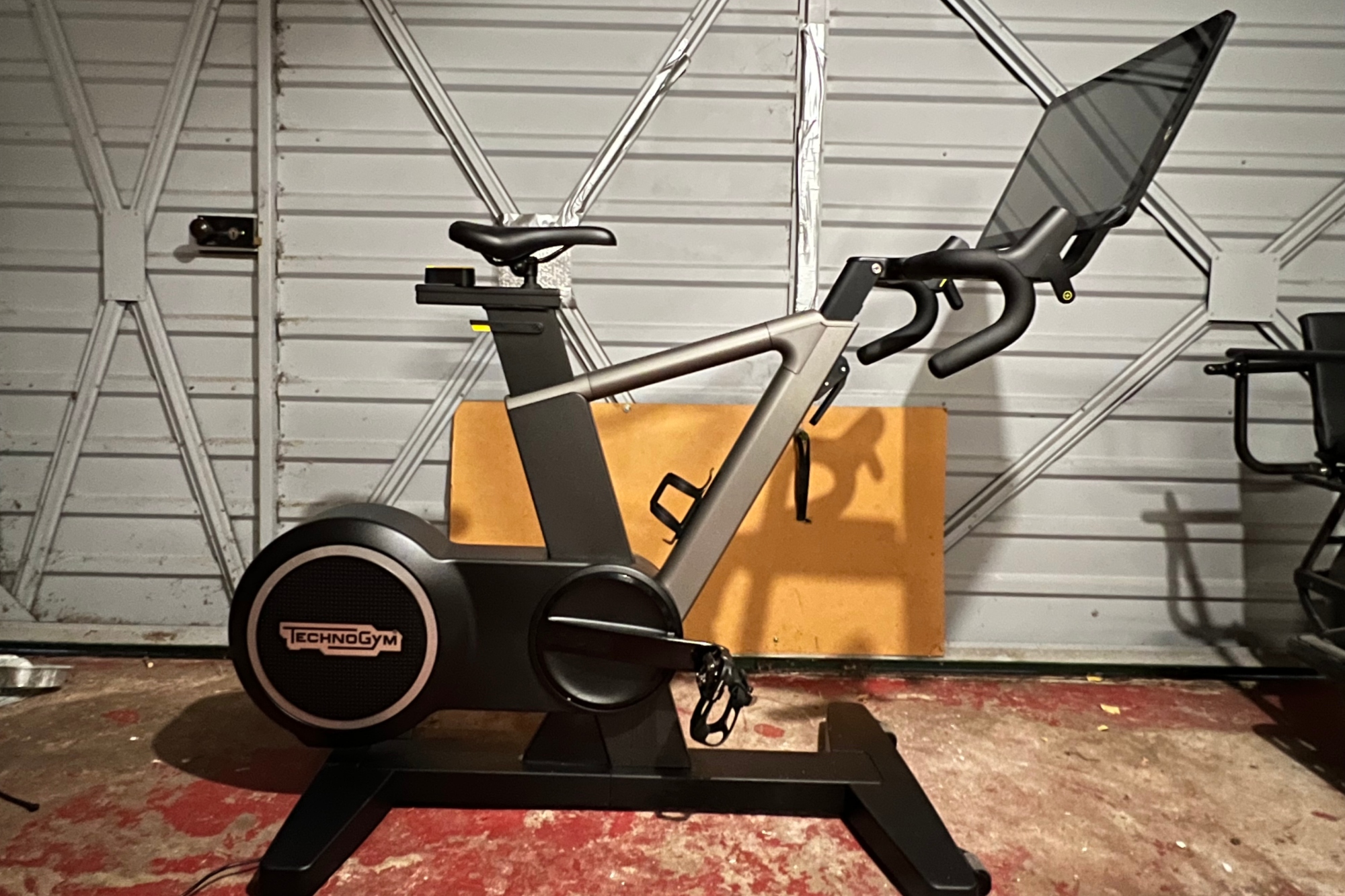
Specifications
Reasons to buy
Reasons to avoid
By far the simplest to use during our testing, the Technogym Ride features a 22-inch screen with extensive compatibility for third-party ride and entertainment apps. Like many of its competitors, the Ride uses an electromagnetic system to add resistance, enabling it to simulate climbs and descents. The peak power output compared to the bigger brands is nearly a 1000wh down, though. So, we found that doing big sprint efforts or taking on big simulated cols lacks realism. It could work well for those users looking to build a solid base during the winter months. We were left impressed by the system's smoothness, though.
The two-touch start feature and simplicity of the fit adjustments made the system great for frequent use by multiple people, but in reality, it’s hard to see why you would choose this over the Wattbike, Wahoo or Tacx options, given it is more expensive than all of these.
- Read our full Technogym Ride smart bike review
Most realistic indoor smart bike

Specifications
Reasons to buy
Reasons to avoid
If you’re after a realistic ride feel from your smart trainer, then the Kickr won’t disappoint. We loved the physical grade changes, the simulated shifter and the customizable gearing ratios, all of which make the Kickr feel a lot more like your regular road bike. The 5-point fit adjustment doesn’t hurt either.
The real-time gradient changes can simulate climbs up to 20% as well simulating descents of -15%. Both are made possible by the Kickr's ability to tip backwards and forward. As for the gear ratios you can choose from Shimano, Sram or Campagnolo cassette ratios, allowing you to configure the bike to match the gearing on your actual bike(s).
We appreciate the option to be able to add regular components to the Kickr too, meaning you can fit your favoured stem length, saddle or handlebars to make you feel more at home.
- Read our full Wahoo Kickr Bike review
Best indoor smart bike for fit and adjustability
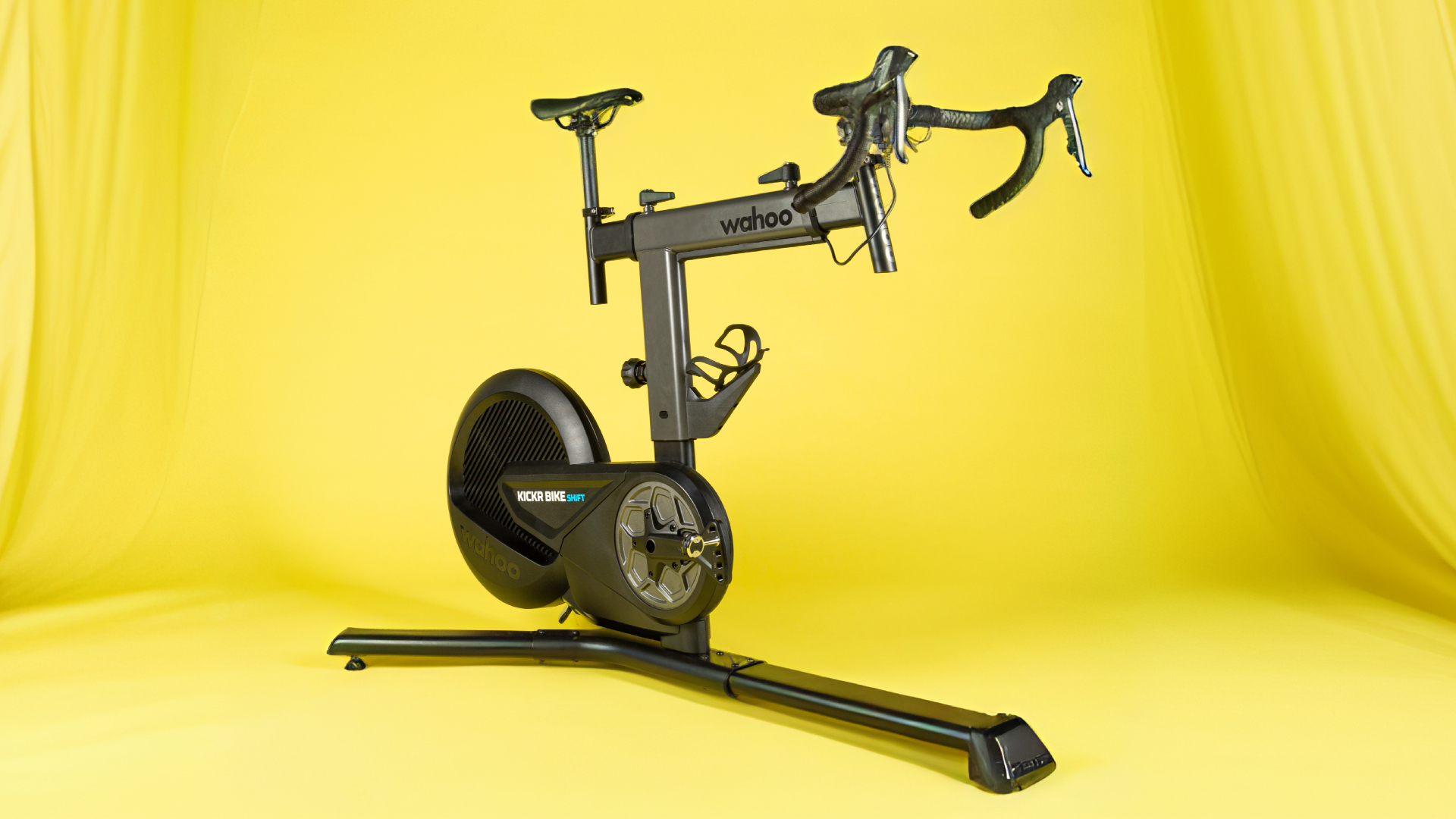
7. Wahoo Kickr Bike Shift
Our expert review:
Specifications
Reasons to buy
Reasons to avoid
Think of the Kickr Shift as a more affordable Kickr Bike. Yes, you’ll have to sacrifice the gradient stimulation as the Shift uses a static steel frame. But in return you get a far lighter bike, both in terms of weight and its impact on your wallet.
There are other differences, too. The Shift uses an eddy-current electromagnetic system to power the bike rather than the motor used by the Bike. That said you still get 2200wh of peak power, which means it remains competitive with models from other brands.
Perhaps our favourite feature of the Kickr Shift is its ease of set-up and its superb ergonomics. Like other Kickr smart bikes you get the excellent Wahoo shifters that help deliver a realistic ride feel. There’s also the 5-point adjustable fit system that allows us to find a really comfortable position on the bike ahead of our training sessions.
Finally a word on the bike’s accuracy. During our testing period we found that it was never ‘out’ by more than two watts when compared to the numbers shown by our power meter pedals.
Spec Table
| Header Cell - Column 0 | Connectivity | Weight | Resistance | Adjustment | Max Power Output (Wh) | Max Simulated Grade (%) |
|---|---|---|---|---|---|---|
Tacx Neo Bike | BLE/ANT+ | 50kg | Electromagnetic | Automatic/manual | 2200wh | 25% |
Zwift Ride with Wahoo Kickr Core | BLE/ANT+ | 35.5kg | Electromagnetic | Automatic | 1800wh | 16% |
Wattbike Atom Next Gen | BLE/ANT+ | 44kg | Electromagnetic | Automatic/manual | 2500wh | 25% |
Wahoo Kickr Bike | BLE/ANT+/WiFi | 42kg | Electromagnetic and enhanced motor | Automatic | 2500wh | 20% |
Technogym Ride | BLE/ANT+/WiFi | 65kg | Electromagnetic | Automatic/manual | 1500wh | 15% |
Wahoo Kickr Bike Shift | BLE/ANT+/WiFi | 40kg | Electromagnetic | Automatic | 2200wh | 20% |
Wattbike Proton | Any ANT+FEC Bluetooth FTMS enabled app | 48kg | Electromagnetic | Automatic | 1800wh | 25% |
How we test
The Cycling Weekly team has ridden hundreds of virtual kilometres on all the smart bikes featured in this guide. Our reviews and scores are based on a variety of areas, including ease of setup, app connectivity, specification, and usability
All of the smart bikes were tested across multiple sessions. This allows us to find the base and test the bike’'s ability to accurately replicate sessions and data. These findings are then cross-checked against a power meter or other forms of home trainer.
While most of our testing is completed on Zwift, allowing us repeatable reference points, we also check compatibility with other third-party indoor cycling apps where possible.
Perhaps most importantly and although subjective, we try to relay the concept of 'ride feel' - that is what pedalling feels like on the bike during a variety of different efforts. This perhaps more than anything else, dictates how enjoyable it is to use.
If you would like to know more about how the Cycling Weekly team puts the best biking products to the test, why not visit our How We Test page?
You may also need...
Aside from a bike to ride there isn't much more needed to get going with indoor smart bike training. If you are going to invest in your setup then here is nine ways to make your indoor cycling experience more enjoyable. My top recommendations from this list are definitely a good fan and finishing with a cake.
Unless you already have a set training plan, maybe one from a coach or team, then one of the many third-party cycling apps is recommended. They are great at keeping the monotony at bay and a great way connect with the wider cycling community.
Last but not least, cycling indoors is hot, even if its freezing outside. Having cycling kit designed specifically for indoor use that helps disperse the additional heat and has high wicking properties, makes indoor cycling a far more comfortable experience.
How to choose the best indoor smart bike
What is the difference between a smart bike and an exercise bike?
First, in recent years, we have seen the best exercise bikes become more connected with third-party apps, which blur the lines between the two. Traditionally, smart bikes are far more advanced, featuring built-in power meters, automated resistance, advanced adjustability, and a better fit. They cater well for cycling enthusiasts with dedicated training plans.
Exercise bikes tend to be much simpler, with manual resistance aimed at supplementing other sporting endeavours by providing crosstraining and basic cardio. While some exercise bikes are catching up with smart bikes, with increasing connectivity and overall peak outputs, smart bikes have been advancing their user experience, too. Many smart bikes now offer customisable virtual gearing options. Some even go as far as having arcade-style controllers that let you take charge of your on-screen avatar.
What is better: A smart trainer or a smart bike?
There are a couple of considerations when choosing between a smart trainer and a smart bike. The first of which is the available space you plan to train in and storage possibilities. If space is at a premium, this is where one of the best smart indoor trainers shines, allowing you to pack your setup away when it is not in use. The trade-off here is that the peak performance can be limited due to the compact nature of the units. Smart bikes will need a dedicated space, but tend to be far sturdier when putting in big efforts. Turbo trainer manufacturers have worked hard on this, with brands such as Wahoo and Tacx achieving outputs of up to 2000 watts and simulating gradients of up to 20%, similar to those found on smart bikes.
Comfort and attention levels heavily influence the decision-making process. Smart trainers now offer fantastic levels of fit adjustability and continue to improve all the time. They will never 100% replicate your bike fit, and this is where turbo trainers, which combine with a real bike, have the edge. On the flip side of that coin, smart bikes offer a wider range of integrated connectivity options, with built-in screens and interactive features such as avatar control now commonplace.
What are the features of a smart bike?
Characterised by several performance-orientated features, smart bikes should include accurate metric readings for power, cadence, speed and distance. This data is important so you know your effort is matching the numbers required in your training plan. It can also make a big difference when using a third-party indoor cycling app.
A fully adjustable fit is imperative, it’s a feature we look for on every smart bike we test. How this is achieved differs from model to model, with the ultimate goal of offering greater rider comfort and realism. Working in tandem with the resistance, many smart bikes now feature virtual gearing options, increasing the realism of your indoor cycling experience and allowing you to measure your effort more effectively. Many models will also offer a wide range of gradient simulations. A smart bike should feature somewhere between a 15-25% incline and a 5-15% decline, so you can tick off all those virtual cols.
Frequently asked questions about indoor smart bikes
How do indoor smart bikes work?
All of the smart bikes we have tested feature an electromagnetic resistance system. In layman's terms these work by increasing the electrical current to a coil of metal, which in turn grows its magnetic field. This magnetic field when in near contact with another magnetic material like a flywheel, forms what is called an eddy current. It is this current that creates the resistance.
These systems are fantastic for smart bikes and turbo trainers, as resistance can be increased or decreased with a near-instant effect. Resistance can also be completely removed allowing simulation of descents alongside ascents.
Do indoor bikes help you lose weight?
The benefits of cycling are well documented be it indoors or braving the elements outside. Indoor cycling is fantastic for eliminating variables from your training effort. Most will think about the weather, but terrain plays a big part too. Indoor training provides consistent parcours, giving you a repeatable base that allows you to focus on the specific effort required in your training plan. This could be the ‘fat-burning’ zones’, for example. So, it is possible to lose weight using a smart bike, but only as a helpful tool within a wider, healthy weight loss regime.
We have a fantastic guide by Dr Eimar Dolan which outlines 6 simple ways of losing weight by cycling but without sacrificing performance.
Is a Peloton bike a smart bike?
We consider the Peloton Bike to be one of the best exercise bikes, rather than a smart bike. The reason for this is that Peloton still features manual resistance adjustment, which is really the key defining feature between smart and exercise bikes. However, it is also Peloton's overall fitness ecosystem that puts it more into a general all-around fitness platform and less of a dedicated bicycle training tool.
Is there a cheaper alternative to Zwift?
There are many excellent apps available, whether you're a Zwifter or not. We cover this topic in more detail in our guide to the best indoor training apps for cycling. However, if you're seeking a more budget-friendly option, consider MyWhoosh. This completely free, ad-supported platform offers features very similar to those of Zwift or Rouvy.
The latest race content, interviews, features, reviews and expert buying guides, direct to your inbox!
Like many, Matt began his bicycle industry journey on the spanners at his local bike shop. After spending his youth mountain biking, he was inspired to embrace gravel during his tenure with Evans Cycles' in-house brands, Pinnacle and Hoy Bikes. Recognising the evolving industry, Matt eagerly seized the chance to become an E-bike designer, winning several awards with the E-bike brand Cairn Cycles.
These days, Matt is likely to have a toddler sitting shotgun or off the beaten track somewhere on the South Downs.